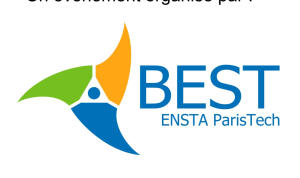In today’s dynamic retail landscape, the market for books and stationery continues to thrive, fueled by a persistent demand for knowledge, creativity, and effective organization. Whether you’re an independent bookstore owner, an online retailer, or a stationery supplier, understanding the nuances of sales and transactions in this sector is paramount to your success. This comprehensive guide will delve into strategies, trends, and best practices to help you optimize your sales, streamline transactions, and ultimately, grow your business.
The Ever-Evolving Book Market: More Than Just Pages
The book market is a fascinating blend of tradition and innovation. While physical books continue to hold their charm, the rise of e-books, audiobooks, and self-publishing platforms has significantly reshaped the industry.
Understanding Your Audience: The first step to effective book sales is knowing who you’re selling to. Are your customers avid fiction readers, academic scholars, or parents looking for children’s literature? Segmenting your audience allows for targeted marketing and inventory management.
Leveraging Diverse Formats: Don’t limit yourself to physical copies. Offering a range of formats – hardcovers, paperbacks, e-books, and audiobooks – can cater to different preferences and expand your reach. Consider partnerships with audiobook platforms or develop your own e-book distribution channels.
Curating a Compelling Collection: A well-curated selection is crucial. Beyond bestsellers, consider niche genres, local authors, and independently published works. Highlight unique titles and create themed displays to spark interest. Regular stock rotation and staying abreast of publishing trends are key.
The Power of Storytelling and Community: Books are more than just products; they are gateways to stories, knowledge, and new perspectives. Engage your customers by hosting author events, book clubs, and reading challenges. Create a sense of community around your store, whether physical or online, where readers can connect and share their passions.
Effective Pricing Strategies: Competitive pricing is important, but value goes beyond the sticker price. Consider bundle deals (e.g., a book and a matching bookmark), loyalty programs, and seasonal discounts. For new releases, pre-order incentives can drive early sales.
Stationery: Fueling Creativity and Productivity
Stationery, often seen as a supporting category, is a powerful segment in its own right. From elegant notebooks and premium pens to functional office supplies, stationery products cater to a wide array of needs – personal expression, professional organization, and artistic pursuits.
Identifying Key Segments: Stationery customers can range from students needing basic supplies to artists seeking specialized materials, or professionals requiring sophisticated organizational tools. Understanding these segments helps in tailoring your product offerings.
Highlighting Quality and Craftsmanship: For many stationery enthusiasts, quality is paramount. Emphasize the materials, design, and craftsmanship of your products. Storytelling around the origin or creation of a particular item can add significant value.
Bundling and Cross-Selling Opportunities: Stationery lends itself perfectly to bundling. Think about a journal and a pen set, an art sketchpad with a set of pencils, or a planner with colorful markers. Cross-selling related items, such as a stylish desk organizer alongside notebooks, can significantly increase average transaction value.
Tapping into Trends: The stationery market is influenced by design trends, sustainability concerns, and personalized items. Stock eco-friendly options, offer customization services (e.g., personalized journals), and stay updated on popular colors and aesthetics.
The Gift Market: Stationery makes for excellent gifts. Position certain items as ideal presents for various occasions – birthdays, graduations, or holidays. Attractive packaging can further enhance their appeal.
Optimizing Your Sales Funnel and Transaction Process
Beyond product selection, the efficiency of your sales funnel and transaction process directly impacts customer satisfaction and repeat business.
Seamless Online Experience (E-commerce): For online retailers, your website is your storefront. Ensure it’s user-friendly, visually appealing, and mobile-responsive. High-quality product images, detailed descriptions, and customer reviews are essential. A clear navigation, robust search function, and intuitive checkout process minimize cart abandonment.
In-Store Experience (Physical Stores): A well-organized and inviting physical store encourages browsing and discovery. Friendly and knowledgeable staff can provide personalized recommendations, enhancing the shopping experience. Effective merchandising, clear signage, and comfortable browsing areas are vital.
Streamlined Payment Systems: Offer a variety of secure payment options, both online and offline. For e-commerce, this includes major credit cards, digital wallets (e.g., PayPal, Apple Pay), and potentially “buy now, pay later” services. In physical stores, contactless payments are now a standard expectation. Ensure your POS system is reliable and efficient.
Inventory Management: Accurate inventory management prevents stockouts and overstocking. Utilize inventory tracking software to monitor sales, predict demand, and manage reorder points. Efficient inventory reduces carrying costs and ensures popular items are always available.
Shipping and Fulfillment: For online businesses, shipping is a critical touchpoint. Offer clear shipping options, transparent pricing, and reliable delivery services. Providing tracking information and timely communication about order status improves customer trust. Consider offering local pickup options where feasible.
Returns and Exchanges: A clear and customer-friendly returns and exchange policy builds confidence. Make the process straightforward and easy to understand. While no business enjoys returns, a positive experience can turn a potentially negative situation into an opportunity for future loyalty.
Marketing and Promotion for Maximum Reach
Even the best products won’t sell themselves. A robust marketing strategy is essential to attract and retain customers.
Content Marketing: Create valuable content related to books and stationery. This could include blog posts about new releases, reading lists, book reviews, journaling prompts, stationery hacks, or DIY craft ideas. This positions your business as an authority and draws organic traffic.
Social Media Engagement: Utilize platforms like Instagram, Facebook, Pinterest, and TikTok to showcase your products, engage with your audience, and run promotions. Visual content works particularly well for books and stationery. Encourage user-generated content by inviting customers to share photos of their purchases.
Email Marketing: Build an email list and send regular newsletters featuring new arrivals, special offers, author spotlights, and exclusive content. Segment your list to send targeted messages based on customer preferences.
Search Engine Optimization (SEO): Ensure your website is optimized for search engines. Use relevant keywords in your product descriptions, blog posts, and website content (e.g., “best fantasy novels,” “eco-friendly stationery,” “planner supplies online”). Optimize for local SEO if you have a physical store.
Paid Advertising: Consider targeted ads on platforms like Google Ads, Facebook Ads, or Amazon Ads to reach specific demographics and interests.
Collaborations and Partnerships: Partner with local schools, libraries, authors, artists, or complementary businesses (e.g., coffee shops) for cross-promotional activities.
The Future of Books & Stationery Sales
The industry is continuously evolving, with technology playing an increasingly significant role. Personalization, subscription boxes market for books and stationery, augmented reality (AR) experiences for product previews, and a stronger focus on sustainable and ethically sourced products are all trends to watch. Embracing these innovations while maintaining a focus on quality products and exceptional customer service will be the key to long-term success.
By implementing these strategies, focusing on both product excellence and operational efficiency, and continuously adapting to market changes, businesses in the books and stationery sector can not only survive but thrive, fostering a community of engaged customers and building a resilient, profitable enterprise






